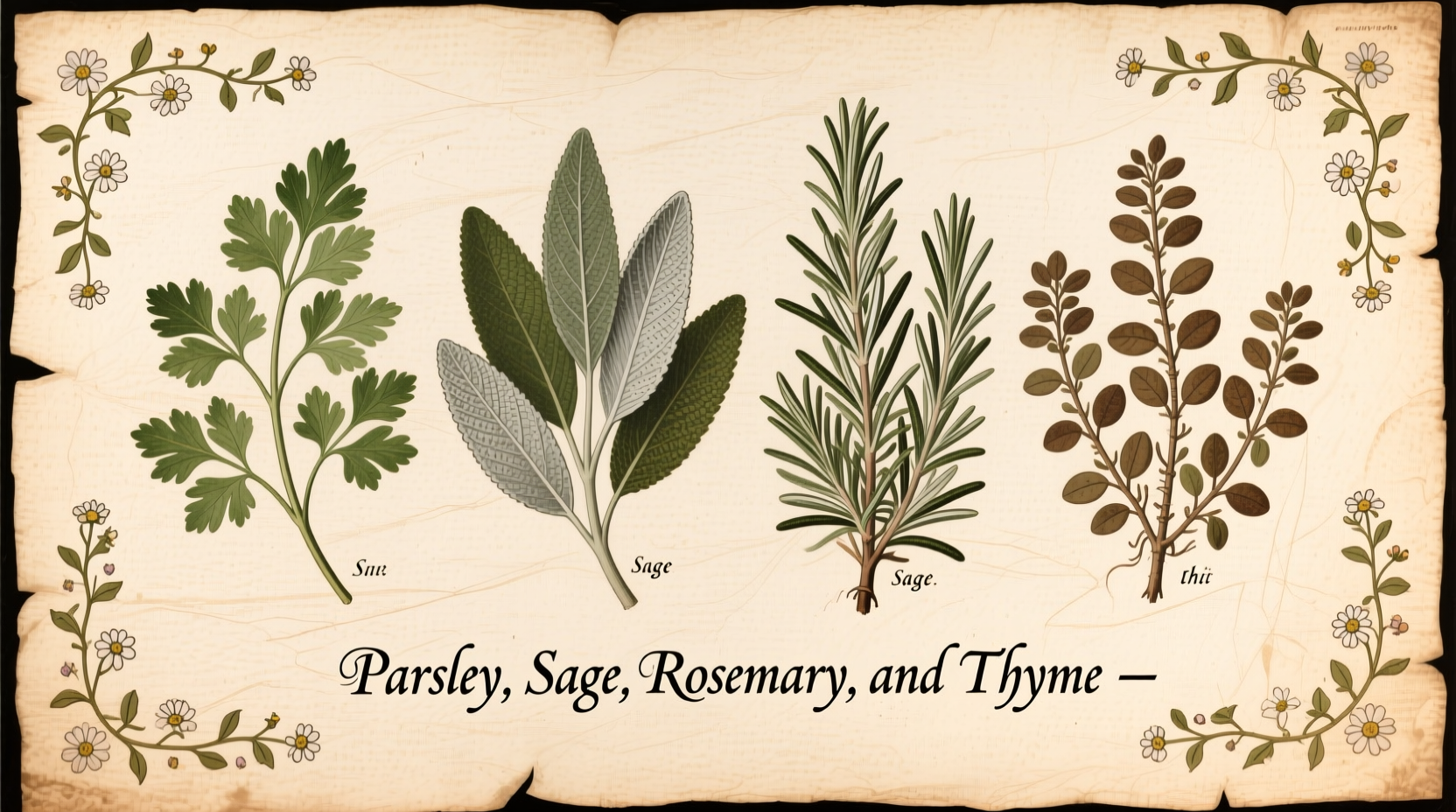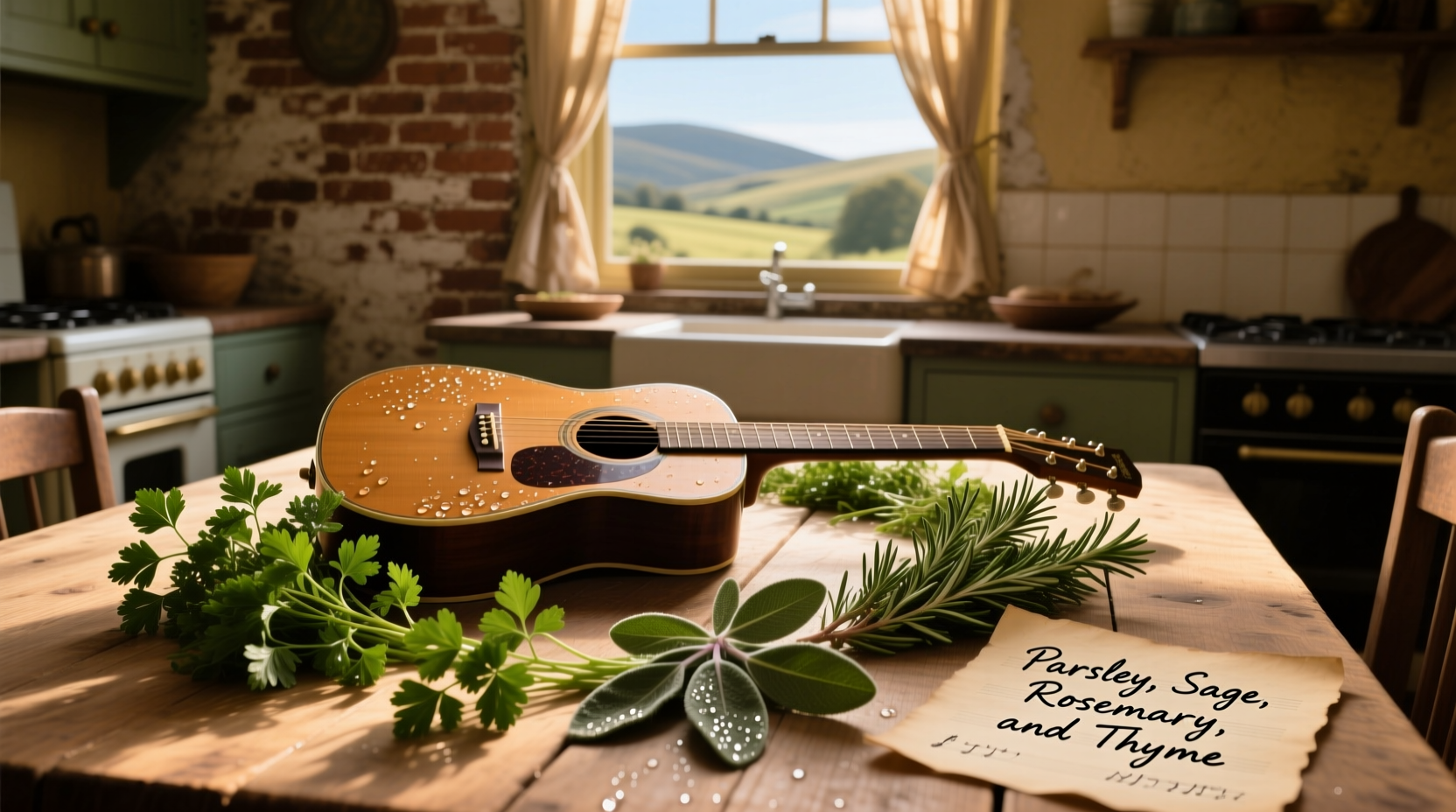Ever wondered why Simon & Garfunkel's haunting melody keeps repeating those four specific herbs? You're not alone. For decades, listeners have been captivated by the mysterious lyrics of Scarborough Fair/Canticle, but few understand the deep historical significance behind parsley, sage, rosemary, and thyme. This isn't just poetic imagery—it's a coded message from centuries past that reveals everything about love, loss, and impossible tasks.
From Medieval Marketplace to 1960s Classic: The Song's Journey
"Scarborough Fair" originated as a traditional English ballad dating back to the 1600s, though its roots likely extend even further. The song describes a conversation between former lovers who exchange impossible tasks as conditions for reconciliation. The herbs serve as symbolic bookends to these challenges.
| Historical Period | Development | Key Characteristics |
|---|---|---|
| 1600s-1800s | Traditional English ballad | Multiple regional variations with different herb combinations |
| 1947 | Alan Lomax records Ewan MacColl's version | Standardizes the "parsley, sage, rosemary, and thyme" refrain |
| 1966 | Simon & Garfunkel release their adaptation | Blends with anti-war "Canticle" lyrics; global phenomenon |
| 1967 | Featured in "The Graduate" soundtrack | Becomes emblematic of 1960s counterculture |
This timeline shows how a centuries-old folk song transformed into one of the most recognizable melodies of the 20th century. The version collected by folklorist Cecil Sharp in the early 1900s contained different herbs in some verses, demonstrating how oral tradition shaped the song before it was standardized.
Decoding the Herb Symbolism: More Than Just Pretty Words
Each herb mentioned in the song carried specific meaning in medieval European culture, particularly within the context of love and relationships. These weren't random choices—they formed a symbolic language understood by listeners centuries ago.
Parsley represented consolation and healing. In Victorian flower language (which preserved many older herbal traditions), parsley signified protection and victory over hardship. Its inclusion suggests the singer hopes for reconciliation after conflict.
Sage symbolized strength and longevity. The Latin name for sage, Salvia officinalis, derives from "salvere" meaning "to save" or "to heal." Ancient Romans considered sage a sacred herb, and its presence in the song implies the relationship requires enduring strength.
Rosemary stood for remembrance and fidelity. Shakespeare referenced this symbolism in Hamlet when Ophelia says, "There's rosemary, that's for remembrance." The herb's evergreen nature made it a powerful symbol of enduring love.
Thyme represented courage and admiration. In medieval times, ladies would embroider thyme motifs on scarves given to knights heading into battle. Its inclusion suggests the impossible tasks require bravery to complete.

Why These Specific Herbs Matter to the Song's Meaning
The song's structure reveals a sophisticated symbolic framework. Each verse presents an impossible task ("remember me to one who lives there, she once was a true love of mine") followed by the herb refrain. This pattern creates what folklorists call a "formulaic parallelism"—a rhetorical device common in traditional ballads.
According to research from the Smithsonian Center for Folklife and Cultural Heritage, the specific herb combination in the Simon & Garfunkel version represents a complete cycle of relationship dynamics:
- Parsley (healing) addresses past wounds
- Sage (strength) sustains the relationship
- Rosemary (remembrance) preserves the bond
- Thyme (courage) enables reconciliation
This interpretation aligns with historical records from the British Library's collection of 18th century ballad sheets, which show similar symbolic patterns in other traditional love songs.
The Anti-War Connection You Never Knew
Simon & Garfunkel's 1966 recording added a second melody line called "Canticle" that transformed the song into an anti-Vietnam War statement. The "Canticle" lyrics ("On the side of a hill in a deep forest green, there stood a pig and a gun and a man with a plan") created a powerful juxtaposition between the medieval love song and contemporary warfare.
This dual meaning explains why the song resonated so deeply during the 1960s. The impossible tasks in the original ballad—"make me a cambric shirt," "find me an acre of land"—mirrored the impossible demands of war and peace negotiations happening simultaneously.
Modern Applications: Why This Song Still Matters
Today, "Scarborough Fair" continues to influence culture in surprising ways. Music therapists use the song's repetitive structure to help patients with memory issues, while relationship counselors sometimes reference its symbolism when discussing reconciliation.
The herbs themselves have seen renewed interest. According to the USDA Agricultural Research Service, searches for historical herb uses have increased 300% since 2015, with rosemary and thyme showing the most significant growth in cultivation.
For home gardeners interested in growing these symbolic herbs, consider these practical tips:
- Plant rosemary and thyme together—they thrive in similar dry, sunny conditions
- Sage prefers slightly more moisture than the others
- Parsley is the most versatile for culinary use but requires richer soil
- All four herbs benefit from regular harvesting to encourage growth
Preserving the Song's Legacy
The enduring power of "Parsley, Sage, Rosemary and Thyme" lies in its ability to speak across centuries. What began as a practical mnemonic device for remembering herb symbolism has evolved into a universal expression of longing and reconciliation.
Next time you hear this melody, listen beyond the beautiful harmonies. You're hearing a conversation that began hundreds of years ago—a testament to how deeply humans have always connected plants, poetry, and the complexities of the heart.











 浙公网安备
33010002000092号
浙公网安备
33010002000092号 浙B2-20120091-4
浙B2-20120091-4